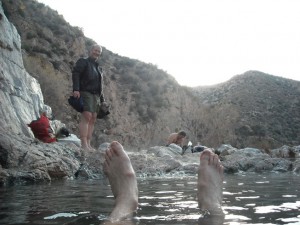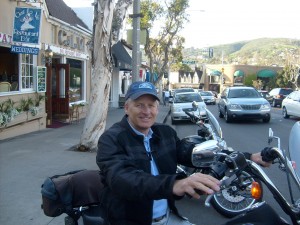Staff Management: An Essential Component To Practice Success
A big reason for your chiropractic practice is doing well is because of your staff. And, a big reason your chiropractic practice is not doing well is because of your staff. Either way, your staff plays a major role in the success of your business.
How much can a good staff member contribute to the office? What is the Return On Investment for staff expenses? There does not seem to be any good research on this for chiropractic offices. (If you know of any, we would appreciate the references.) We have seen some studies and based upon these and our experience it would be safe to say that a staff member should contribute at least double what you pay them.
This means that if you pay a Chiropractic Assistant, for example, $2,500 (including taxes, FICA , etc.) a month, you should at least be able to generate $5,000 because of her. On the other hand, when a staff member is not performing well, their contributions can go to zero, or even lower. If they are alienated from the doctor and the practice, they can actually become a liability. An unhappy or defiant staff can turn away patient referrals, discourage patient phone appointments, create disharmony with other staff, and many other costly problems.
Staff Turnover
The cost of staff turnover can be very high, as much as three times their monthly pay. This would include recruiting cost, training cost, extra time on your part, lost patient and lost new patients. For example, if your senior front desk C.A. leaves and she is paid $2,500 per month, it could take a couple of months before you find another CA that has the qualifications you need, and at least a couple of more months before they are trained.
By the way, this is why it is so important to have your practice systematized with all of your procedures written up for fast training and evaluation. (This is what our PM&A Practice Development Programs help you with!)
Conversely, as mentioned above, you can save money by letting an under performer go.
Staff Motivation
Once you have personnel, you have to keep them motivated. Frankly, this can be a problem for many doctors. There is a basic reason for this which I will explain later on. First, let’s look at some interesting information on employee motivation.
A recent article from the Harvard Business School reports on a study that showed that most employees start out relatively motivated, but things change after about 6 months.
“The great majority of employees are quite enthusiastic when they start a new job. But in about 85 percent of companies, our research finds, employees’ morale sharply declines after their first six months—and continues to deteriorate for years afterward.”
One of the biggest causes for this goes straight to the relationship they have with their managers.
“Many companies treat employees as disposable. At the first sign of business difficulty, employees—who are usually routinely referred to as “our greatest asset”—become expendable.
“Employees generally receive inadequate recognition and reward: About half of the workers in our surveys report receiving little or no credit, and almost two-thirds say management is much more likely to criticize them for poor performance than praise them for good work.
“Management inadvertently makes it difficult for employees to do their jobs. Excessive levels of required approvals, endless paperwork, insufficient training, failure to communicate, infrequent delegation of authority, and a lack of a credible vision contribute to employees’ frustration.” (You can read the entire article here.)
We have seen versions of these problems in every office. Even our own!! It happens. One of the most common habits of doctors that can impede staff performance and motivation is micro managing. For example, fretting over the office volume, doctors can hover around the front desk causing the staff to be more concerned about the doctor’s constant evaluation than engaging with the patients.
To solve these de-motivation factors, the authors suggest the following:
1. Instill an inspiring purpose.
2. Provide recognition.
3. Be an expediter for your employees.
4. Coach your employees for improvement.
5. Communicate fully.
6. Face up to poor performance.
7. Promote teamwork.
8. Listen and involve.
We would add two more factors. First:
9. Clear policies and procedures consistently applied. You need to coach your team on the same procedures today that you applied yesterday, and will use tomorrow. These procedures should be written down in some form for easy reference. This gives an objective reference for staff coaching (#4) and regular staff evaluations (#6).
And the most important, and most overlooked in a doctor’ office:
10. Separate your roles of doctor and clinic director so that you can be a part time manager.
The Most Common De-motivator
Most chiropractors are either too busy and/or too focused on doctoring to have much attention left for caring for staff. After all, the staff is there for the doctor and to help him or her with the patients. The doctor is not there for the staff. And, the staff is paid to do their job.
So, what’s the problem?
The problem is that employees are people and not machines. And, like all living things, they need a certain amount of nurturing. Growing a business is like growing an orchard. It needs tending. Doctors do not feel they should have to do this, and as doctors, they shouldn’t.
However, as the C.E.O. their business, they have too. Larger offices have office managers or practice administrators that can help do much of the staff management. We usually recommend that the doctor assign a staff member to take the role, if only for a few hours per week, of senior C.A., office coordinator, or office manager.
Most doctors can be managers and coach their staff, but don’t. The reason, and the solution are relatively simple: just separate the roles of doctor and clinic director. As the doctor, everyone works for you and the patient. As clinic director and a part of management, you work for everyone else.
With good business systems in place, a well organized office should require little time of the doctor to be a clinic director. And in the role of business owner and investor, the doctor should see a very good return on his efforts if his staff is motivated.
###




